3.
Review from Variety, September 1, 1926
BEAU GESTE
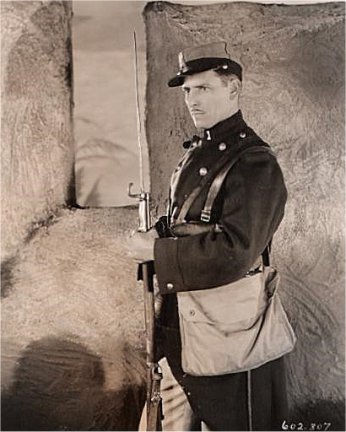 Famous
Players' picture and a Herbert Brenon production featuring Ronald Colman,
by arrangement with Samuel Goldwyn. Adapted from P.C. Wren's novel of the
same name with Brenon the director. Cameraman, J. Roy Hunt. At the Criterion,
N.Y., for a run commencing Aug. 25. Running time, 129 mins.
Famous
Players' picture and a Herbert Brenon production featuring Ronald Colman,
by arrangement with Samuel Goldwyn. Adapted from P.C. Wren's novel of the
same name with Brenon the director. Cameraman, J. Roy Hunt. At the Criterion,
N.Y., for a run commencing Aug. 25. Running time, 129 mins.
Michael "Beau" Geste Ronald
Colman
Digby Geste Neil Hamilton
John Geste Ralph Forbes
Lady Brandon Alice Joyce
Isobel Mary Brian
Sergeant Lejaune Noah
Beery
Major de Beaujolais Norman
Trevor
Boldini William Powell
Hank Victor McLaglen
Buddy Donald Stuart
A corking picture, but as a road
show special not entirely surefire. The idea is that it will have to hold
to just a few cities outside of New York to have a chance at $2. As a straight
program leader it can't miss, although the running time of 129 minutes
may keep it from equalling house records.
It's a "man's" picture, much
more so than "The Big Parade." The story revolves around three brothers
and their love for each other. And a great looking trio--Colman, Hamilton
and Forbes. Beyond that the love interest is strictly secondary, practically
nil. Which brings up the question as to how women are going to like it.
The picture is all story. In
fact, only one cast member seems to get above the scenario. This is Noah
Beery as the bestial sergeant-major. A part that once comes along every
so often, and Beery gives it the same prominence in which Wren, the author,
conceived it. It's undoubtedly one of the best portrayals Beery has ever
turned in.
When all is said and done, Colman,
in the title role, hasn't so very much to do. Hamilton equals him for footage
and Forbes exceeds him. But that's a natural result of the script, as both
Beau and Digby die before the finish. Colman's work invariably being even,
he makes no deviation here but with the limited footage and action it serves
to throw Hamilton and Forbes to the fore. Forbes, understood to be in his
first picture, impresses all the way and will probably develop a future
in celluloid. Hamilton also gives a sincere performance to leave his mark.
But there can be no question that Beery is the outstanding figure of the
picture.
The story smacks of rank melodrama,
is just that in fact, but is so dressed up and served in film form that
the hoke is dyed another color. "Beau Geste " is a well put together mystery
story working backward to its solution. First you get the mysterious happenings
and then the story which explains the solution after you've seen the finish.
It's programmed in those three parts--mystery, narrative and solution with
the picture run off that way. A brief interlude of seconds marks the division
between the mystery and the story, while a full intermission precedes the
solution. Under that routine the film took 97 minutes to reach the rest
period and 32 to unfold the answer. Rather complicated and away from the
conventional formula.
It starts out with Major de Beaujolais
(Norman Trevor), heading a rescue battallion of the Foreign Legion, reaching
the desert fort which as sent for him. The only response to his signals
is a single shot from the fort. Closer examination reveals that the inmates
of the fort are standing at their firing embrasures, but are all dead.
Sending a bugler to scale the wall is a loss for the trumpeter fails to
reappear. The major then conducts a personal examination, finding a deserted
stronghold with the sergeant-major, senior man in the fort, lying dead,
pierced through the chest by a French bayonet, and still no sign of his
bugler. From the cold hands of a private, lying beside the sergeant, he
takes a note admitting to the theft of a famed diamond known as the Blue
Water. His men, becoming nervous before this deserted tomb, the major opens
the gates and asks for volunteers to make further inspection. When again
inside the walls he discovers that the bodies of the sergeant and the private,
from which he took the note, have disappeared. His men, now approaching
panic, he withdraws, intending to further investigate in the morning when
suddenly the fort bursts into flames.
This passage of the troops becoming
unnerved at the uncanny happenings is not as stressed in the film as in
the book. However, this ends the mystery section, with Brenon questionably
having tacked on dramatic sub-titles in an attempt to emphasize the unnatural
series of incidents.
From here the tale goes back
15 years to an English estate where the Geste boys (Beau, Digby and John)
are children companioned by Isobel. They are the wards of Lady Brandon
(Alice Joyce), who is rearing them. A truant husband, unseen is referred
to as a spendthrift with the family's main possession being a magnificent
diamond called the Blue Water. A wealthy Hindu bargains with Lady Brandon,
and Beau overhears the conversation. At this point the story jumps ahead
to show the children fully grown and played by the Messrs. Colman, Hamilton
and Forbes, with Mary Brian as Isobel.
A cable from the erring husband
says the Blue Water must be sold and the stone is brought to the table.
The lights suddenly go out and come on again to reveal the diamond missing.
Only the immediate family, plus Lieutenant de Beaujolais and a minister,
are present. Lady Brandon orders the lights put out so that the guilty
party can replace the jewel, but relighting shows the stone still missing.
The brothers laughingly admit
in their rooms that each in turn has taken it. John awakes in the morning
to find a note from Beau saying he has stolen the gem and has gone away
with a postscript from Digby reading not to believe Beau, that he (Digby)
has the diamond and has left. John packs, and also leaves to share in the
blame, despite he and Isobel have been life-long sweethearts.
The next jump is to the barracks
of the Foreign Legion's receiving post in France, where John, having joined,
sees Beau and Digby already in uniform. Here the trio come across the despicable
Lejaune, who breaks up the combination by dispatching Beau and John to
a desert fort and keeps Digby behind. Lejaune is after the diamond, having
forced the information from Boldini, a private, caught in the act of snatching
Beau's money belt after overhearing the brothers still chafing each other
about the Blue Water. Boldini has his hands pierced by bayonets for the
attempt, a gruesome spectable [sic], but excellently played by William
Powell.
Shortly following a couple of
anti-Lajaune incidents comes the high point of the picture in an Arab attack
upon the fort. Swarms of them, and attacking from all sides. Picturesque
and an applause winner at the premier. The attack comes just as a mutiny
within the fort is about to break against Lejaune, but this is put off
because of the Arabs. Picked off one by one, the soldiers are stood up
in their embrasures after they've been dropped by Lajaune to fool the attacking
force. All drop, including Beau, which leaves John and the sergeant as
the survivors. Lejaune is rifling Beau's person, the Arabs having withdrawn,
when John pulls a bayonet. Lejaune is about to shoot him, but Beau grabs
the killer's leg, the shot goes wild and John thrusts the bayonet through
the hated officer's chest. Beau then dies in John's arms, leaving a letter
for Lady Brandon. This terminates the story portion.
The solution part opens by again
showing the arrival of the rescue battallion, with John firing the one
shot at the column to give him time to escape in lieu of being tried for
the murder of Lejaune. The bugler sent over the wall is Digby, who finds
Beau dead, no trace of John, and is determined to carry out a childhood
pact of giving Beau a Viking funeral. Digby hides while the Major makes
his first inspection, and, as the latter is asking for volunteers outside
the fort, carries Beau's body into the barracks room and prepares a bier.
A Viking funeral demanding a dog at the feet of the deceased, Digby hauls
the deal Lejaune into that position and sets fire to the cot, escaping
over a back wall.
John and Digby meet in a depression
of the sand dunes, and later run into two American members of the Legion
sent back by the Major for reinforcements. The quartet becomes lost, one
of their two camels dies, and Digby, knowing the four can never get through
with one animal, leaves a note and plunges off into the desert to die.
The next migration is back to
England, showing John on the Brandon estate to tell of Beau and Digby being
dead and to deliver the former's letter. Beau's epistle informs Lady Brandon
that, having overheard her conversation with the Hindu and knowing she
had sold the Blue Water, he had stolen the imitation stone to save her
from embarrassment when her husband demanded that it be turned into cash.
And that's the "beautiful gesture."
Brenon seemingly has followed
the book very faithfully. So much so there are only two laughs during the
entire film. One is when a close-up shows Lejaune being called names that
can't be misinterpreted. And that's one fault with this release. There
is no light and shade to it.
That many didn't like it at intermission
but changed their minds about it at the finish, due to the story's composition
arrangement, may be the tip-off on what is likely to keep it from being
a "special." Nevertheless, the compound theme has been held together extraordinarily
well, and it must have been a nightmare to the cutters. Brenon has taken
one liberty in making the purchasing Hindu, for no apparent reason, wink
at the family minister carrying the famed jewel during that early portion,
and he may also be said to have left unexplained how the lights go out
at the time Beau takes the stone. But they won't think of that till afterward,
and if the picture draws that much afterthought it can't be a bad picture.
Scenically "Geste" is about the
best example of desert shooting that has come along. J. Roy Hunt is flashed
as the photographer, and has made an excellent job of it.
Alice Joyce is superb as Lady
Brandon, with her dignity and poise, while Mary Brian means little or nothing
as Isobel. William Powell as the stool pigeon, Boldini, and Norman Trevor
as the major are really the only outstanding figures other than the bothers
and Lejaune.
Electric letters 14 feet in height
proclaim "Beau Geste" as being at the Criterion, and it's liable to stay
awhile. It's a well-done mystery-melodrama. The men will like it, but it's
doubtful if the women will care for Beau dying with the sympathy in the
character revealed by the climax after his death. Besides which there's
that lack of change of pace and its length. Brenon has given too much time
to planting the brother-love theme when the Geste boys are pictured as
children Any further cutting will likely be done through this sequence.
Either way, a great "break" for
P.C. Wren, the author, as this is his first novel, and F.P. has also bought
his second book.
Skig.
4.
Review from Moving Picture World, September 4, 1926
Through the Box-Office Window
~ Reviewers' Views On Feature Films ~ Edited by C.S. Sewell
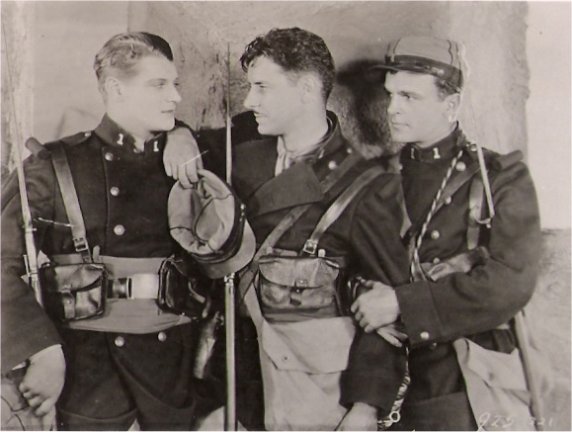
"Beau Geste"--Paramount
Epic of French Foreign Legion
Directed by Herbert Brenon
Offers Superb Entertainment
Reviewed by Epes W. Sargent
Cast:
Michael "Beau" Geste Ronald
Colman
Bigby [sic] Geste Neil
Hamilton
John Geste Ralph Forbes
Lady Brandon Alice Joyce
Isobel Mary Brian
Sgt. LeJaune Noah Beery
DeBeaujalais [sic] Norman
Trevor
Boldini William Powell
Hank Victor McLaglen
Buddy Donald Stuart
Based on novel by Sir Percival
Christopher Wren.
Scenario by Paul Schofield from
adaptation by John Russel and Herbert Brenon.
Directed by Herbert Brenon.
NEXT Spring, when fan magazines,
trade papers and the daily press proceed to hold inquest on the waning
season by naming the "ten best" films, it seems reasonably certain that
"Beau Geste" will appear on most lists because it has the three vital elements
of story, production and playing to a marked degree. In spite of the fact
that there is only a passing allusion to love interest, and while women
appear in only a few of the scenes, there is a sweep to the story that
grips the interest to the last scene.
Reformers who storm against the
invariable custom of a misguided industry in playing and overstressing
the sex appeal are cordially invited to see "Beau Geste." It has the sex
appeal of a scenic, the spirit of a Western action story and the grip of
a politely told serial.
There have been other stories
of the French Foreign Legion; well told and interesting. Since before the
days of "Under Two Flags," the Legion, rendezvous for adventure, has intrigued
writers, but there has been screened no more appealing story than this
of intelligent and artistic translation of Wren's story into the language
of action.
And yet a vastly different estimate
might have been written but for the whetting of the curiosity through the
prologue. Without this teasing interpolation from the latter scenes, it
would be two reels or more before the real interest of the spectator could
be gained. Eliminate the prologue and the development of the interest would
be too slowly achieved.
As it is the mystery is exploited
in the first section. You get the thrill of the vast desert stretches,
of the Citadel of the Dead, the seemingly mysterious happenings within
the fort and then, with the curious interest aroused through a genuine
appeal, the narrative reverts to the childhood of the three men whose fortunes
the spectator is asked to follow.
The first scene shows the stretches
of the desert with a body of the Legion moving to the relief of a beleaguered
garrison. Camel trains and foot troops people the snowy sands, distributed
with the skill that marks the best work of the European producers The fine
handling of the mobs in "The Loves of the Pharaoh," which were so widely
acclaimed at the time, gave us nothing better than the effects achieved
by Herbert Brenon in this and later scenes. He crashes in upon the minds
of the spectator through the very immensity of his appeal and then sweeps
on to the little desert outpost where the dead Legionaires still man the
battlements, achieving in death the victory that was denied them living.
A trumpeter is sent forward to
scale the walls. He gives no sign once he passes the battlements. His superior
officer follows, and can find no trace of the missing man. He throws open
the gates and calls for volunteers to aid his search. Meanwhile the bodies
of the Commandant and a soldier disappear. The startled men rush back to
the safety of their companies. The apparently deserted fort bursts into
flames. It is nearly two hours later that you arrive at the simple and
natural solution of the mystery.
And right here occurs the one
slight blot on the perfection of the production. A set of leaders flash,
designed to arouse interest. They are all worded in the best style of the
long-defunct Fireside Companion. They would serve well on a trailer, perhaps,
but they are wholly unnecessary here. It requires no sub-titles to arouse
interest. That was created by the prologue itself.
Then the story goes back to the
boyhood of the three Geste boys, opening with a charming sequence in which
they play at war. At the time this seems to be merely an appeal with the
always reliable "child stuff," but when the picture ends you realize the
need for just these scenes, since they motivate much of the later action.
The plot marches rapidly to the enlistment of the three in the French Foreign
Legion, each acting alone and yet actuated by the common childhood memory
of Major de Beaujolais. Then come long sequences of stark realism; unlovely
sections from the life of the Legionaire [sic] mounting to the deviling
by Sergeant Lajaune which leads to mutiny interrupted by the attack of
the Touaregs.
Not for a moment does the interest
lag, it grows in increasing volume to the denouement, two more scenes,
and the story has been told. The continuity writer has done in the action
what the author has accomplished in words. The scenario itself is an achievement.
Ronald Colman, in the title role,
is not permitted to overshadow the others to the detriment of the story.
He gives a sincere and convincing picture; one that adds much to his artistic
stature. Noah Beery as the evil genius is very little like his usual self.
He is not Beery playing just another character. He is Lajaune brought to
screen life. A limited amount of comedy relief is injected by Victor McLaglen
and Donald Stuart, and Norman Trevor is splendid as the Major. But it is
unfair to select certain players for especial mention. Each of the cast
contributes to the general effect. It is the ensemble which makes the greater
impression. It is one of the best balanced casts we have observed in a
long time; notable both for the absence of poor acting as well as for the
competent assumption of the various roles.
Much of this credit must go to
the director. Mr. Brenon has risen splendidly to the situation. He has
developed his opportunities to the utmost. The result is an artistic success
that is almost equally certain to be a financial triumph.
The action is divided between
the English home of the Geste and the Sahara. The former are typical of
the old manors which are the results of centuries of intensive care, but
these, beautiful as they are, lack the appeal of the desert sequences.
It is desert and not a sandbank,
interminable miles of gleaming white sands that fairly seem to radiate
their heat.
Many of the shots have the artistic
value of paintings and the disposition of the players follow the lines
of artistic composition.
And with singular restraint the
scenarist and the director have omitted a sandstorm. There was none in
the book. It is not dragged into the screen drama. It is not needed to
give punch. That rises from the story itself.
"Beau Geste" should enjoy a long
run on Broadway. It should do equally well in its out-of-town showings.
Not since "The Covered Wagon"
has Paramount achieved as great a picture.
Viewing comments
Joyce essentially has a supporting
role in this popular action/adventure/mystery, but it is a key one. She
provides the springboard for the plot as the beloved aunt who is the keeper
of the stolen jewel. She appears at the beginning and end, quickly switching
to a grey wig when the boys grow up. She doesn't have a chance for much
acting, but her presence is necessary to give credibility to the notion
that these noble but foolish young men would give up their lives to save
her from embarrassment and each other from accusation. The film is superbly
done as far as acting, direction, suspense, and setting are concerned,
but goes to show that women's films don't have a monopoly on themes of
pointless and destructive self-sacrifice.

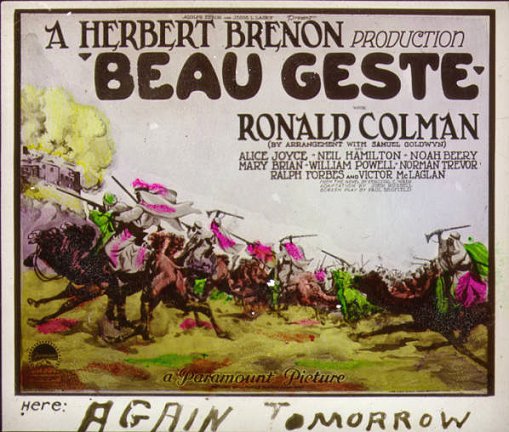

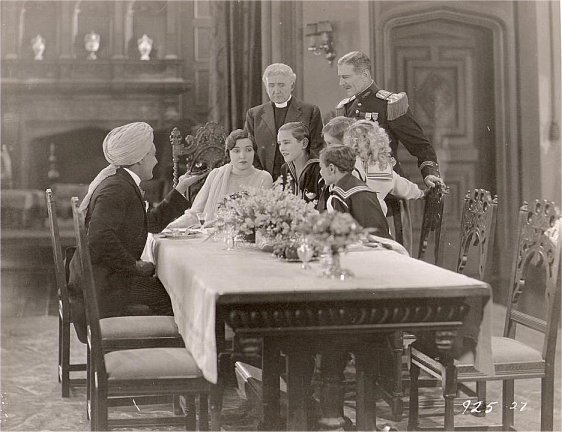
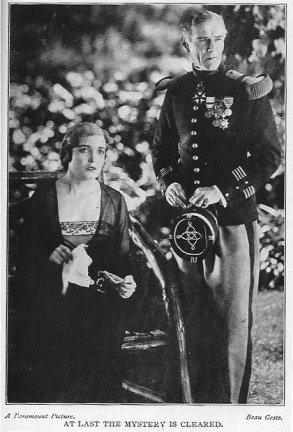
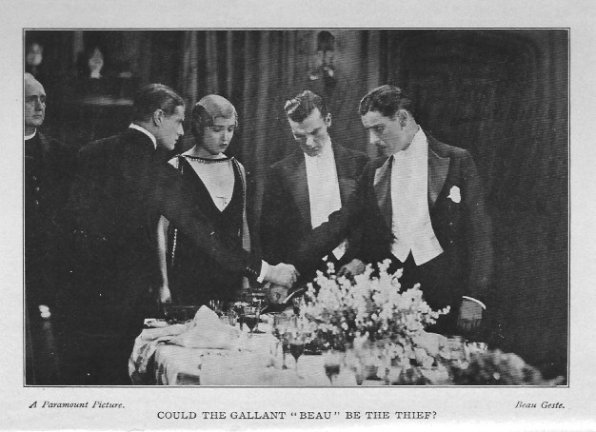
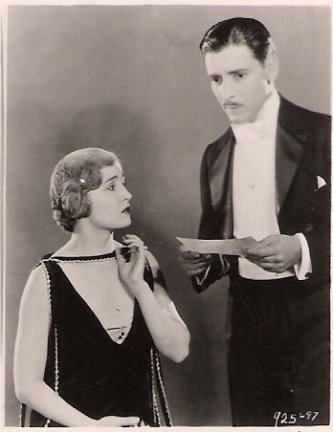
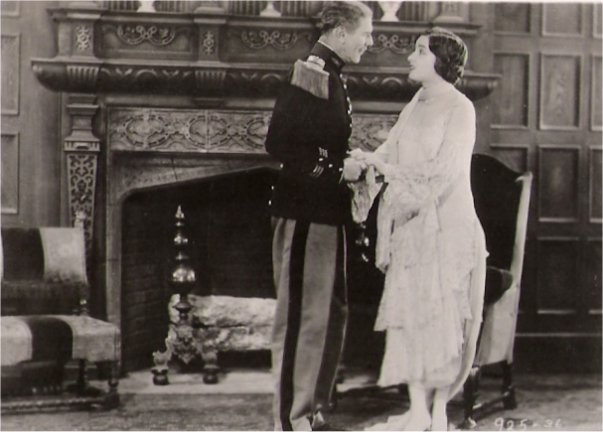
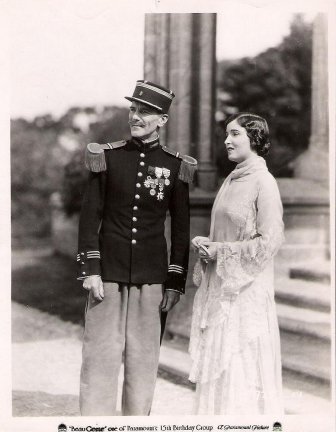
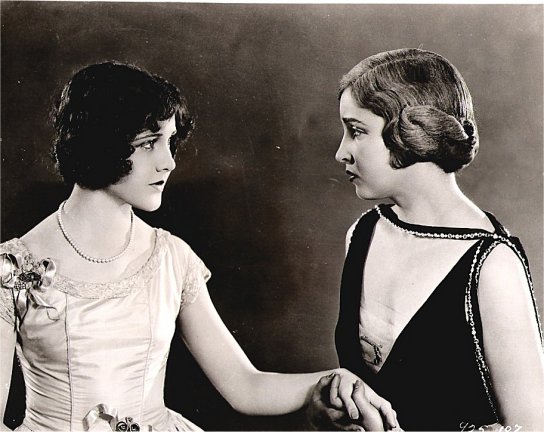
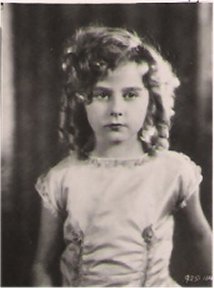
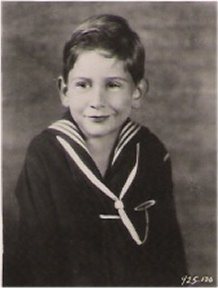
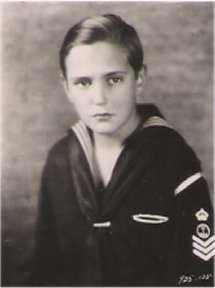
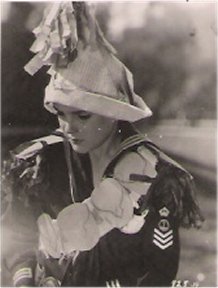
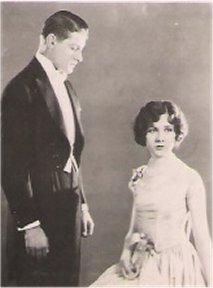
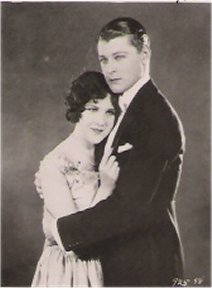
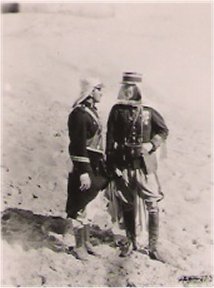
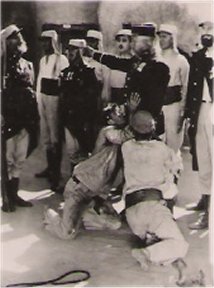
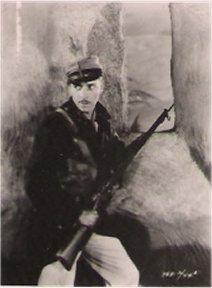

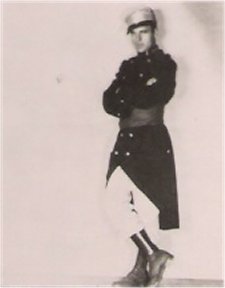
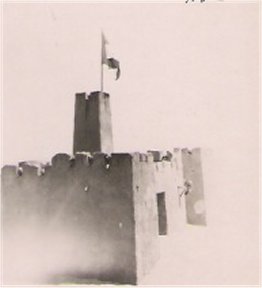
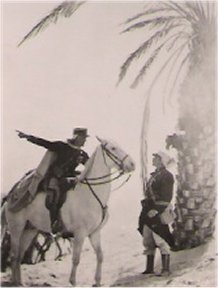
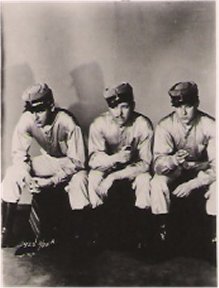
 Famous
Players' picture and a Herbert Brenon production featuring Ronald Colman,
by arrangement with Samuel Goldwyn. Adapted from P.C. Wren's novel of the
same name with Brenon the director. Cameraman, J. Roy Hunt. At the Criterion,
N.Y., for a run commencing Aug. 25. Running time, 129 mins.
Famous
Players' picture and a Herbert Brenon production featuring Ronald Colman,
by arrangement with Samuel Goldwyn. Adapted from P.C. Wren's novel of the
same name with Brenon the director. Cameraman, J. Roy Hunt. At the Criterion,
N.Y., for a run commencing Aug. 25. Running time, 129 mins.















